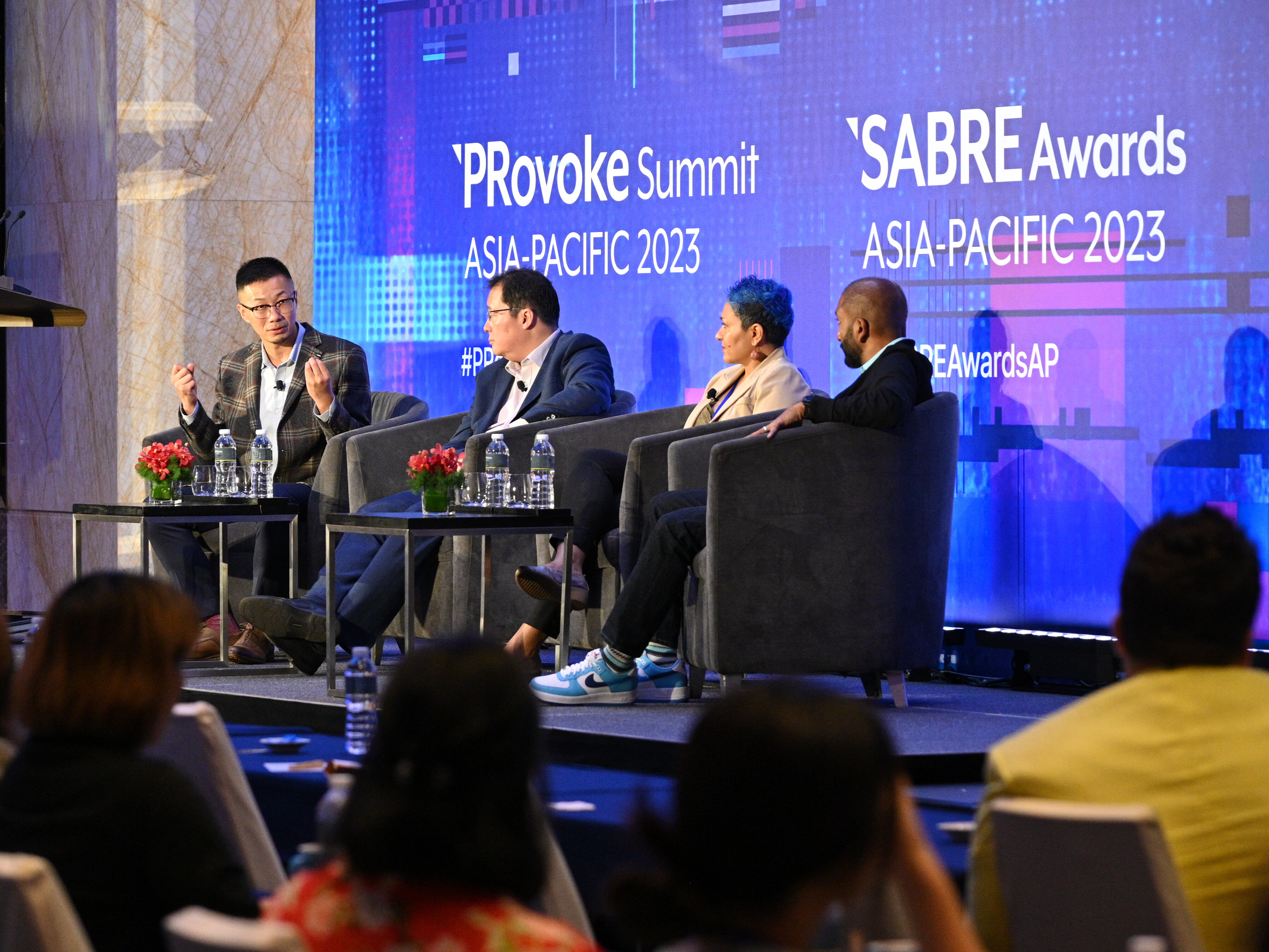Asiya Bakht 29 Sep 2023 // 11:40AM GMT

SINGAPORE — As disinformation becomes rampant, communicators and brands need an arsenal of tools to combat it effectively. These could range from social listening tools to media intelligence tools that aid in identifying emerging threats and, at times, even mitigating them, helping you to stay prepared.
This was view of the panellists participating in a session titled 'The War Against Weaponised Information' sponsored by BCW at PRovoke Media's Asia-Pacific Summit earlier this week. Moderated by PRovoke's Arun Sudhaman, the session featured BCW Asia-Pacific chief digital officer Joe Peng, QI Group chief communications officer Ramya Chandrasekaran, and Jeffrey Lim, director at Joyce A. Tan & Partners.
To address disinformation, BCW has implemented a model that utilises cognitive AI, a technology that mimics human thinking processes.
Peng emphasized the value of this approach, stating: “Given the limitations of manpower and time for PR and communication professionals like us, it's a valuable tool to assist us in efficiently processing vast amounts of data. This is one of our experimental initiatives aimed at harnessing AI's power to enhance our marketing efforts, particularly in our region. It also plays a crucial role in safeguarding our brands against potential data breaches and other risk mitigation measures.”
He compares the process of combating disinformation to working with clients on crisis management where it is important to develop a solid platform for communication and making it a reliable source for our audience.
Chandrasekaran concurred with this perspective and stressed the significance of strong brand assets, especially in the realm of social media, when addressing these concerns.
“I will give you an example. The company that I work for has multiple businesses, and one of them is in the area of direct selling. Now, those of you who are familiar with it, it's a very controversial industry, and there's a lot of disinformation that exists about it. One of the things that we had to do was to set up a dedicated direct selling disinformation section, because it's a very complex topic. We kind of broke it down through FAQs about the difference between direct selling and pyramid schemes. We then focused on search engine optimization to ensure that this content ranked highly in search results when people looked for information related to our company, brand, or industry. This strategic approach allows you to bolster and reinforce your brand assets, effectively countering the prevalent misinformation.”
While managing disinformation threats through communication strategies and solutions is important, legal mechanisms can play an key role too.
Lim said: "As legal practitioners, our primary focus lies in safeguarding our clients' interests, especially when they face potential threats to their reputation and goodwill. In doing so, we often rely on existing legal mechanisms and theories to take appropriate legal actions. Many of these legal frameworks are already in place to address various issues. However, the challenge lies in adapting these laws to the rapidly evolving landscape of technology and staying updated with new legislation.”
Panellists agreed that resorting to legal recourse could be one of the pathways explored by companies but not the only one. Lim advises having a pre-litigation strategy in place which could include being prepared for potential challenges and considering how you'd respond from a legal perspective.
“This readiness should extend throughout your organization. Additionally, it's vital to test your strategies, not just once, but continuously, to ensure they are effective and avoid compounding issues that might arise from the initial incident”, said Lim.
So what exactly is driving disinformation and what is the price brands have to pay for not preparing for it?
Peng thinks that Gen Z is seen as playing an active role in using generative AI to create disinformation. “While I may not entirely subscribe to that idea, it's clear that Gen Z in our region is highly active, with reports suggesting that up to 50% of them are boycotting brands due to their policy stances,” said Peng.
On the question of toll that disinformation takes on brands, Lim shared that, legally, brand value has a quantifiable worth and is seen as a proprietary right that can be damaged or lost. “So it has real economic consequences. It's protected by law as well. We see real value from a legal perspective that you can get, I guess it translates to things like damages, if you had to go and get recovery, it's just that many of these factors are not easily identifiable.”
Chandrasekaran thinks that the cost to a company can be substantial and advocates for increased investment in preparedness.
“This threat is not about to go away. It's here to stay it is probably going to get worse. misinformation and disinformation has existed even way before technology came into play. Joseph Goebbels back in the 1930s was the OG of weaponized information and caused one of the greatest human tragedies in the world. So technology just helps, in amplifying at a much faster rate today. So it's, it's just, it's going to get worse. I don't see it getting better.”



































.jpg)

















